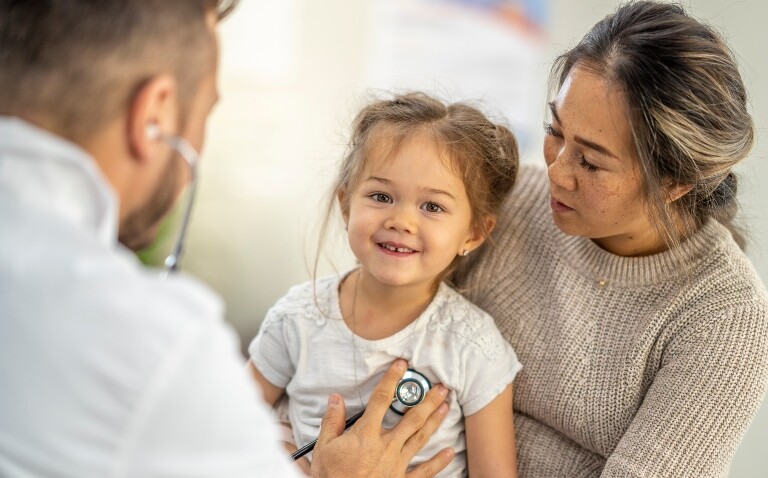Over a million children are living in unsafe homes that are linked to respiratory infections and chronic illness, paediatricians have warned in a new report calling for clean air clinics to be rolled out and adequately funded.
Published by the Royal College of Paediatrics and Child Health (RCPCH), the report found 1.5 million children were living in homes that were causing or contributing to asthma, respiratory infections and asthma.
However air pollution, housing insecurity and overcrowded living conditions with indoor pollutants such as damp and mould are all preventable, it noted.
The ‘Clean air, healthy childhoods: Innovative clinical responses to environmental health inequalities’ report highlights that specialist clean air clinics that have been trialled at Alder Hey Children’s Hospital in Liverpool and the Royal London Hospital can help reduce this harm, but sustainable funding is needed.
Case studies from the report show some families are having to choose between the threat of mould and damp damaging their health or being made homeless, but it highlights clean air clinics as a unique solution for individuals and communities most profoundly impacted by air pollution.
Run by clinicians alongside housing experts, the clinics have helped families secure emergency repairs or get rehoused leading to significant improvements in children’s health, the report found.
The role of clinicians
Professor Ian Sinha, a respiratory consultant at Alder Hey, set up a clean air clinic after realising that a significant proportion of his work in caring for children with respiratory problems involved addressing environmental and housing issues.
Indeed, the report pointed out that in Liverpool, 63% of residents live in some of the country’s most disadvantaged areas, and that air pollution from roads in Liverpool stunt children’s lung growth by 4.6%.
Professor Sinha’s clinic involves longer consultations, taking into account environmental factors in the home that may contribute to their illness patients are given a full medical report which can be sent directly to housing associations.
The Royal London clinic was set up with charity funding by clinicians who had been involved in the case of Ella Kissi-Debrah – a nine-year-old girl who had a fatal asthma attack with an inquest later ruling that air pollution had made a material contribution to her death.
In London, approximately 700,000 children (33%) lived in relative poverty after housing costs in 2021/22, putting them at greater risk of environmental health issues, the report stated.
Care for children referred to the clean air clinics can include home visits and tests for mould with bespoke advice on exposure to environmental pollutants.
In addition to calls for clinicians to incorporate environmental history into routine care, the report also calls for the UK Government to pass a UK-wide Clean Air Act, set strict air quality standards and align with WHO Air Quality Guidelines.
The RCPCH also wants to see the expansion of Awaab’s Law, which mandates social landlords to address serious hazards, including damp and mould, within specific timeframes and will come into effect from 27 October 2025, across the UK to include private renters.
Local authorities and housing teams need to improve housing conditions with faster response to mould and damp complaints, it added.
Make clean air clinics part of routine care
RCPCH officer for climate change, Dr Helena Clements, said: ‘Air pollution, in combination with poor-quality housing are major, avoidable drivers of poor health among children and young people, especially in deprived communities.
‘As a paediatrician, I know how these conditions can have devastating long-term consequences. Children and families are living in environments which are actively making their health worse, increasing pressure on already strained clinicians and health services.’
But clean air clinics show what is possible, she added. ‘These clinics are securing safer housing, reducing exposure to pollution, and helping children breathe more easily but they are not yet part of routine care.
‘Without NHS support and stronger Government action on housing and air quality, many families will remain without the help they need.’
Chloe Owen, clean air policy manager at Asthma + Lung UK, highlighted that air pollution is a social justice issue.
‘People on lower incomes and minoritised ethnic groups are exposed to disproportionately higher levels of air pollution. They also tend to contribute the least to the problem and are more likely to have poorer health generally,’ she said. ‘If the Government doesn’t rapidly clean up the air, the gap between those that have the most and those that have the least will widen further.’
Nina Renshaw, head of health at the Clean Air Fund, added: ‘New research shows that toxic air is expected to contribute to 30,000 deaths in the UK in 2025, while costing the economy and NHS over £27bn. Babies and children bear the brunt of this public health problem, especially those living in deprived areas. We need bold measures and policies to improve air quality if we want to protect children’s health and our healthcare system.’
A report from the National Child Mortality Database last year warned that children from the most deprived areas are four times more likely to die from an asthma attack.
A Government spokesperson said: ‘Air pollution is a serious public health issue, and we are committed to tackling this issue across the country.
‘We have already provided £575m to support local authorities to improve air quality and are developing a series of interventions to reduce emissions so that everyone’s exposure to air pollution is reduced.’
A version of this article was originally published by our sister publication Pulse.










